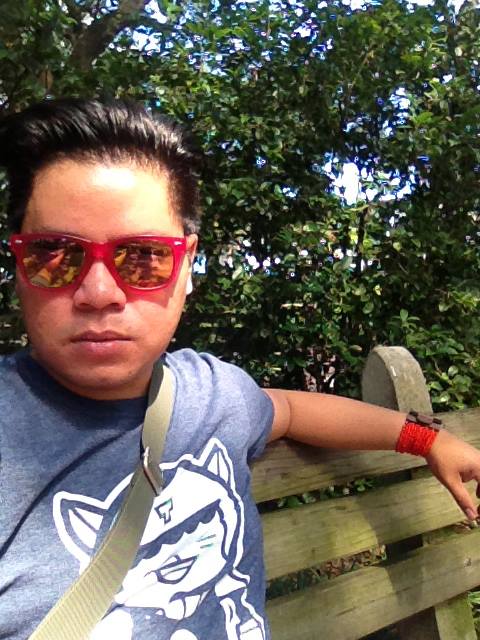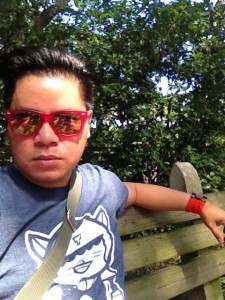The day I took my U.S. naturalization oath five years ago, I was disappointed by the judge’s demand that everyone should speak English. It was like being asked to willingly leave an important part of your identity behind. When I was younger, I may have agreed with him, but the idea of losing a language that shaped who I am was devastating. I still remember that moment from time to time when I think about language and identity.
A few weeks ago, a friend posted on Facebook an interactive map from the Washington Post titled “Mapping where English is not the language at home.” The map illustrates the growing number of non-English language households in the United States. The 2011 American Community Survey by the U.S. Census Bureau, also the source of the Washington Post map, reported that more than 60 million of the U.S. population spoke a language other than English at home. This information reminds me of my parents’ house, where we communicate in at least three different languages in a single conversation. Instead of speaking completely in English, my dad and I sometimes talk in Tandaganon, a language that my mother does not really speak. At the same time, my mom and I will converse in Bisayan and English. My siblings and I talk in English since they do not know either languages. All the language switching is confusing to other people but it all makes sense to us. It is normal. Basically, we are a normal immigrant family household.
In this essay, I write about my own language journey through some of my life stories. I ask, “Who am I?” in the Tandaganon, Tagalog, Bisayan, and English languages.
Sin-o sa ako? When I was five or six years old, I moved from Davao City to the town of Tandag, Surigao del Sur with my lolo and lola (grandfather and grandmother). Tandag is on the Pacific side (Eastern) of the second largest island of the Philippines, Mindanao (blue pin on map: http://goo.gl/maps/XYNXp). Coming from Davao City (green pin on map), also in the island of Mindanao, where Bisayan and Tagalog are widely spoken, I had to learn Tandaganon to be able to completely understand the people around me. In a way, I was learning a new language at an early age. Tandaganon has a lot of similarities to Bisayan. “Good” is maayo in Bisayan and madayaw in Tandaganon. Some words are unique to the area. “Tomorrow” is ugma in Bisayan and silom in Tandaganon. In case you are wondering, in Tagalog “good” is mabuti and “tomorrow” is bukas. I consider Tandag as my hometown. So, I have a great affinity for Tandaganon. I definitely do not want to lose it.
Sino ba ako? Many people in the United States assume that the Philippines has only one language, Tagalog (or Filipino). This is completely far from reality. There are at least 181 languages and dialects spoken in the Philippines. With that said, I think Tagalog and Bisayan are the two dominant languages in the country. With all the languages I learned and studied, Tagalog is by far the most difficult for me to learn and speak. Hindi ako magaling mag Tagalog (I am not good in Tagalog). I still remember the time I received my report card that had my Tagalog class as the lowest grade. Ugh! I guess I am a little disconnected from Tagalog. Once in awhile, I do wonder why I find Tagalog difficult. Maybe it is because I grew up in southern Philippines where majority of the people speaks Bisayan. It could also be an act of pride not to speak Tagalog, a language mainly spoken in the northern Philippines. Historically, there is much political friction between the northern and the southern Philippines. I do remember that some television stations in Cebu City, a southern city, played the Bisayan version of the Philippine national anthem. It is definitely an interesting thought that I would like to explore and understand, especially the dynamics of language, politics, and identity in the Philippines.
Kinsa man ko? I studied high school in Cebu City (red pin on map: http://goo.gl/maps/XYNXp), a few islands away from Tandag, north of Mindanao. Cebu City is the second major city and oldest city in the Philippines, after Manila. Bisayan is the language of Cebu. As a student at the University of San Carlos Boys’ School (Go, Carolinians!), all of my subjects were taught in English, except for the Filipino (Tagalog) language class. I remember the school implemented a policy that all students should speak only in English or Tagalog while on school grounds with the intention that we should all be “professionals.” Bisayan had no place in school. Yes, my beloved native language was not and, possibly, still not considered professional or acceptable in school. Well, wa na nadugay (that did not last long). All of us students did not follow that rule, or if we did, we made fun of it. We pretty much continued with our daily conversations in Bisayan. I am sure the school administration gave up enforcement at some point.
Who am I? English is a required language course in Philippine schools. In fact, it is now an official language of the Philippines, together with Tagalog or Filipino. Since the very first day of school, I have been doing my A-B-C’s but that did not make me a perfect English speaker and writer. When I immigrated to the United States after high school, the move brought me new challenges with the English language. Even though I learned English early in my life, I was so self-conscious about how I sounded, how I phrased words, that I ended up timid most of the times. I was definitely afraid of sounding stupid. I do not say this often but I still am very self-conscious about my writing, even with simply updating my Facebook status. I, or someone else, always find mistakes with grammar, spelling, etc. Yes, I know English but, of a completely different sort. I remember learning English in the Philippines, where long, complicated sentences are considered better. But then, when I was in college here in the United States and taking a rhetoric/composition course, I was taught to be succinct and concise. I still struggle.
One of the many questions that I often get asked as an immigrant is, “What is your native language?” I always find this question difficult to answer. I think I find it difficult because I don’t have just one. Both Bisayan and Tandaganon are very significant to my childhood. These two languages shaped the way I think about my hometown, my culture, and my identity. If I have to choose just one, I will probably choose Bisayan as that is the language I learned first, but only because it was the first. However, Tandaganon, a language I learned from an early age, is much closer to how I define myself as a Filipino. Does your native language have to be the one you learned first? Or could it be the one that you associate with the most?
When I look back at all the moments when language made a significant impact on my life, I smile at the good times and cringe at the bad ones. Mostly I smile at all the memories language has given me thus far, good or bad. Questions about language and identity are common to have and experience. All of us, whether monolingual or multilingual, have journeys in many languages.
Until next time, y’all! Now that I live in the southern state of Georgia, I expect to learn a new variation of the American English language. I am looking forward to it.
Paolo P. Gujilde
Coordinator of Collection Development/Assistant Professor
Zach S. Henderson Library
Georgia Southern University
Statesboro, GA
Resources:
Commission on Filipinos Overseas
http://cfo.gov.ph/
Ethnologue – Philippines
http://www.ethnologue.com/country/PH
US Census – Language Use
http://www.census.gov/hhes/socdemo/language/
SIL Philippines; Partners in Language Development
http://www-01.sil.org/asia/philippines/index.html


